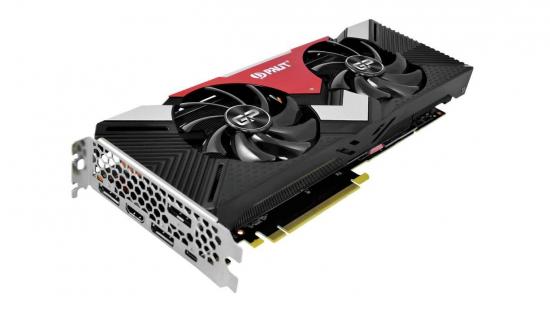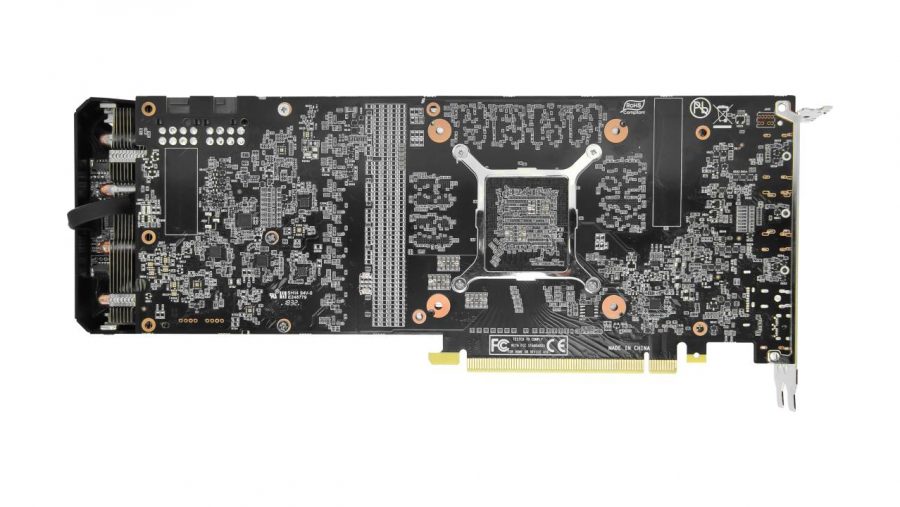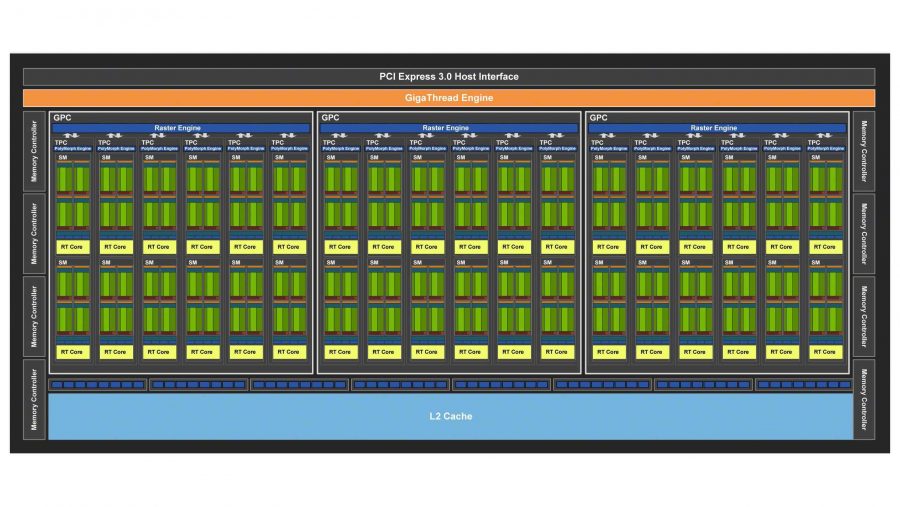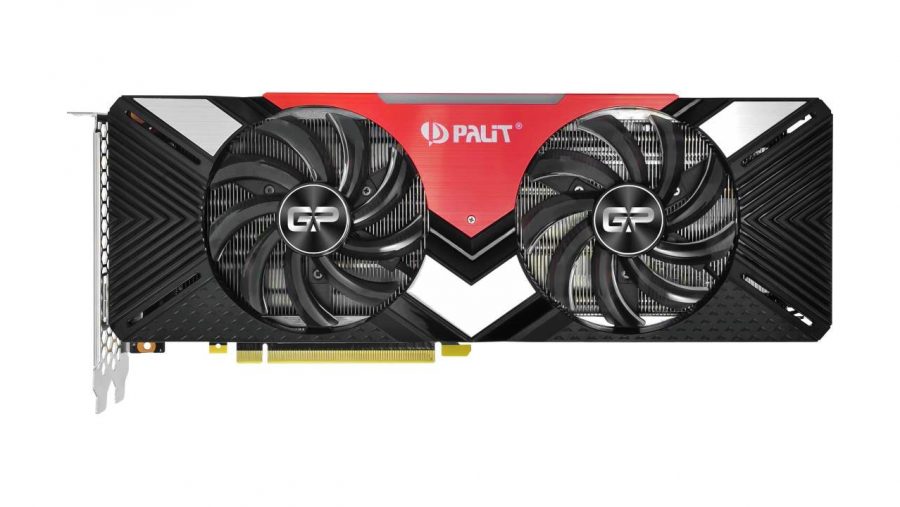Our Verdict
The reference-clocked RTX 2070 is the sub-$500 GPU to buy right now, but the Palit version isn’t quite the one you really should be putting on your wishlist.
The first of Nvidia’s new RTX 2070 cards to cross our test bench comes in reference form from Taiwanese graphics brand, Palit. It’s a version of the third-tier Nvidia Turing GPU that comes with the standard reference clock speeds as well as the base MSRP Nvidia has been publicising since it first announced the new cards.
That’s important because, while the US has been reviewing the expensive, overclocked Founders Edition cards, in the UK we’ve been limited to the reference-clocked cards around launch. It seems Nvidia is aware that, at least around this level of GPU, offering an expensive, overclocked card that is only just faster than the GTX 1080, but over $100 more, isn’t going to go down too well.
The RTX 2080 didn’t get the most overwhelming of receptions over here, mostly because it’s still waiting on the ray-tracing and AI-based fidelity and performance enhancements we were promised when Nvidia first announced the new Turing generation of cards. That’s not Nvidia’s fault however, with Microsoft’s b0rked Windows 10 and DirectX 12 updates failing to make it out alive, but it does mean we’re here with the RTX 2070 still only able to prove its worth in terms of its traditional rasterized rendering performance.
But with the Turing silicon inside it, a new generation of graphics memory at its disposal, and a still hefty GPU clock speed, the reference-clocked Palit version of the Nvidia RTX 2070 is a mighty card, and represents the best sub-$500 GPU now on the market. Though whether the Palit 2070 is the chip’s best home is debatable, especially with the MSI RTX 2070 Armor 8G offering more for the same money.
Thankfully, unlike the RTX 2070’s bigger 20-series brethren, there actually are some reference-clocked cards available at least to pre-order around launch. Sure, the various AICs will try and encourage you to spend more on an overclocked SKU first, but with the base versions now on test we can happily recommend you wait it out.
Palit RTX 2070 Dual specs
The Palit card is the base spec for the RTX 2070, which still puts it up there with the some of the best of the last generation of pixel pushers from Nvidia. And, handily, puts it ahead of the best of AMD too, the RX Vega 64.
At its heart is the Turing TU106 GPU. Nvidia has taken the rather unprecedented step of introducing the first three GPUs of this new generation on three distinct slices of graphics silicon. That said, the TU106 looks for all the world as though someone has taken to the TU102 chip used in the RTX 2080 Ti with a high-precision saw. It’s almost exactly half the GPU, and notably different from the chip used in the RTX 2080.
| Nvidia RTX 2080 | Nvidia RTX 2070 Founders Ed | Palit RTX 2070 Dual | Nvidia GTX 1080 | |
| GPU | TU104 | TU106 | TU106 | GP104 |
| CUDA cores | 2,944 | 2,304 | 2,304 | 2,560 |
| VRAM | 8GB GDDR6 | 8GB GDDR6 | 8GB GDDR6 | 8GB GDDR5X |
| Memory bus | 256-bit | 256-bit | 256-bit | 256-bit |
| Memory bandwidth | 448GB/s | 448GB/s | 448GB/s | 320GB/s |
| Base clock | 1,515MHz | 1,410MHz | 1,410MHz | 1,607MHz |
| Boost clock | 1,710MHz | 1,710MHz | 1,620MHz | 1,733MHz |
| TDP | 215W | 175W | 175W | 180W |
| Price | $699 | $599 | $499 | $499 |
That means it has 2,304 CUDA cores, arrayed across 36 of the newly designed Turing SMs. It also comes with 144 texture units and 64 ROPs, as well as the currently dormant dedicated ray-tracing and AI processing silicon we still can’t use. There are 288 Tensor Cores for all that Deep Learning Super Sampling goodness and 36 RT Cores to make with the hybrid real-time ray tracing.
With a rating of 6 billion rays cast per second, or 6 Giga-rays/sec, the RTX 2070 is likely the minimum entry point for a decent real-time ray tracing experience from the list of RTX-enabled games – such as Battlefield 5 and Shadow of the Tomb Raider – when they get the Microsoft go-ahead.
“It turns out five billion is about entry price for a good ray traced experience,” Nvidia’s Tom Petersen told me at the RTX launch, which means that unless the RTX 2060 Ti gets itself some serious RT Core support it’s not going to be much of an RTX card.
As for the clock speeds, well, they’re as vague as you might expect. The base clock is set at 1,410MHz and the Boost at 1,620MHz for the reference and 1,710MHz for the overclocked Founders Edition card. But in reality both the Palit and MSI reference RTX 2070 cards we’ve tested punch way above that, sitting around the 1,800MHz mark in general.
As a reference card, the Palit RTX 2070 Dual is very much a basic version. The cooling shroud is pretty simple, with rather flexible plastic surrounding the heatsinks running the full length of the PCB. It does have the requisite RGB illumination, but the green ‘GeForce RTX’ looks a little incongruous mounted on the red brushed metal plate it’s recessed into.
Sadly it also lacks the 0dB fan configuration of some of its peers too. And these are things that MSI’s similarly priced reference Armor card does bring to the table.
Palit RTX 2070 Dual benchmarks
Palit RTX 2070 Dual performance
When you start to play around with the RTX 2070 in gaming benchmarking terms you can immediately see why Nvidia wanted to send us the reference model over the more expensive overclocked Founders cards. Sure, the RTX 2070 is faster than the GTX 1080, but not by a huge margin, and even with a beefy overclock in place that’s unlikey to really change a whole lot.
With the Palit RTX 2070 Dual costing $499 (£460) that puts it roughly on par with the pricing for the GTX 1080, especially as stock of the older cards is ever dwindling. Put that up against the $600+ price tag of the Founders, or third-party overclocked GPUs, and you can see where those cards are going to struggle and how difficult it might to recommend them. Though that said, the very best are at least starting to knock on the door of the GTX 1080 Ti at the very top of the resolution scale.
And that’s where the RTX 2070 is also at its most comfortable, when running at 4K. This is where you’ll see the biggest performance gains over the last-gen Pascal card, with an up to a 16% lead over the GTX 1080. At 1440p the difference isn’t so clear, with performance almost achieving parity, and, on this Palit RTX 2070 at least, at 1080p the Turing chip sometimes falls a little behind the older GPU.
Despite the fact the Turing SM unit is more capable than that used in Pascal – offering concurrent integer and FP operations and new shading techniques – the fact that the GTX 1080 has more CUDA cores inside it suggests that maybe in unoptimised games that matters at the lower resolutions.
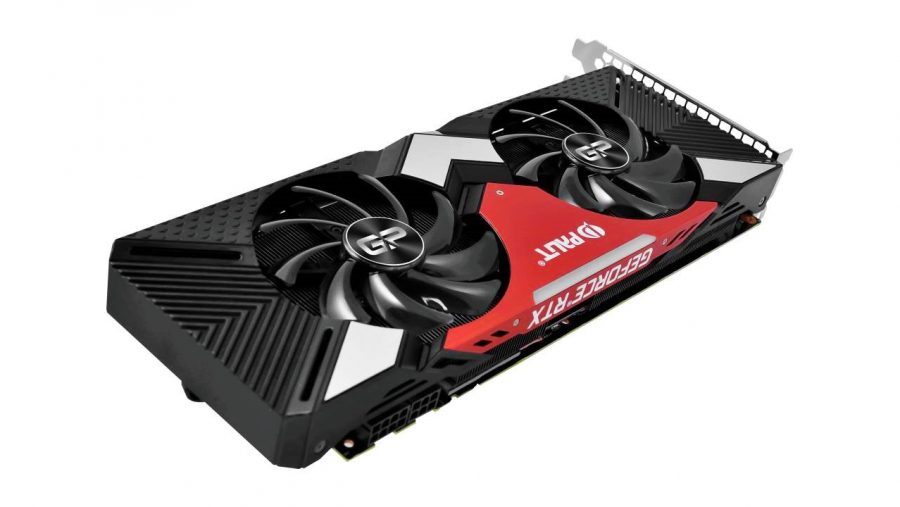
Compared with the RTX 2080 the newer RTX 2070 is around 20-30% slower than its older sibling. That’s not much different to the previous generation of graphics cards, though this Palit reference card is some 60% cheaper than the Founders RTX 2080 we’ve tested…
The cooling design on the Palit card, however, is not great. As we mentioned earlier, it doesn’t have the luxury of the 0dB functionality of its MSI competition, but it also doesn’t function as well either. Where the Founders cards we’ve tested so far in 2080 and 2080 Ti trim run impressively cool in their dual-fan shrouds, the Palit RTX 2070 Dual seems to struggle, hitting 80°C under full load.
It was also not entirely happy using the NVScanner software to try and achieve a basic overclock. And when I say ‘not happy’ I mean the entire machine falls over and needs to be rebooted – something the NVScanner was designed to avoid when overclocking.

Palit RTX 2070 Dual verdict
If you were considering spending GTX 1080 money on a new graphics card, and were massively put off by the heinous price tag tacked onto the RTX 2080, then we’ve got some good news for you: the RTX 2070 is the card for you… if only with some serious caveats.
We’d probably recommend not going for one of the overclocked versions of the third-tier Turing GPU, unless of course you were actually looking to spend GTX 1080 Ti money. The overclocked RTX 2070 Gaming Z from MSI is actually looking mighty close to the top Pascal in gaming terms right now, but is a lot more expensive than either this Palit Dual or the MSI Armor 8G cards.
That still leaves the reference-clocked RTX 2070 as the best sub-$500 graphics card around right now. Where once it was all about the GTX 1080 as the upper-mainstream GPU, now the base RTX 2070 can take over. Urgh. Upper-mainstream… sorry I just gagged a little writing that.
The fact that a $500 graphics card can be a third-tier option of a new GPU generation is still a little galling. And given the fact that Nvidia has announced new bundling deals for its existing GTX 1060, 1070, and 1070 Ti cards shows it still has inventory to shift and, whatever form the 2060 GPU turns up in, it’s not going to be for a while.
In the end the Palit RTX 2070 is probably not the version of the RTX 2070 we’d necessarily recommend. Sure it’s got the performance we want, but the cooling isn’t quite there, and the competition has reference-clocked cards for the same price which outshine it. But still, the RTX 2070 itself is a strong GPU, delivering a quality 4K graphics card that can outperform the GTX 1080 for around the same price. Job done.
